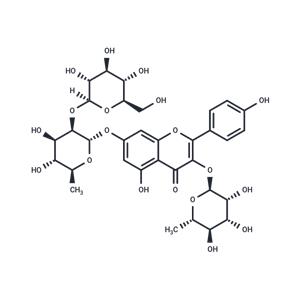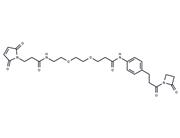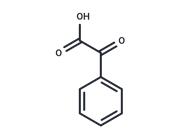| Name | Grosvenorine |
| Description | Grosvenorine (Grosvenorin) exhibits good antibacterial and antioxidant activities, with its metabolites possessing more potent activities, intestinal bacteria play an important role in the gastrointestinal metabolism of grosvenorine and significantly affect its pharmacological activities. |
| In vitro | The Grosvenorine metabolism in an in vitro simulated human gastrointestinal tract (including artificial gastric juice, artificial intestinal juice and intestinal flora), as well as its pharmacological activities (including anti-complement, antibacterial and antioxidant activities), was investigated. The results showed that Grosvenorine was metabolized by human intestinal flora; its four metabolites were isolated by semi-preparative HPLC and identified by NMR as kaempferitrin, afzelin, α±-rhamnoisorobin, and kaempferol. Further pharmacological evaluation showed that Grosvenorine exhibited good antibacterial and antioxidant activities, with its metabolites possessing more potent activities. Although Grosvenorine did not present obvious anticomplement activity, its metabolites showed interesting activities. |
| Storage | Powder: -20°C for 3 years | In solvent: -80°C for 1 year | Shipping with blue ice. |
| Solubility Information | DMSO : 50 mg/mL (67.5 mM)
|
| Keywords | Bacterial | inhibit | Grosvenorine | Inhibitor |
| Inhibitors Related | Neomycin sulfate | Dehydroacetic acid sodium | Ampicillin sodium | Methyl anthranilate | Doxycycline (hyclate) | Kanamycin sulfate | G-418 disulfate | Sulfamethoxazole sodium | Metronidazole | Doxycycline | Dimethyl sulfoxide | Crystal Violet |
| Related Compound Libraries | Flavonoid Natural Product Library | Bioactive Compound Library | Traditional Chinese Medicine Monomer Library | Selected Plant-Sourced Compound Library | Natural Product Library | Natural Product Library for HTS | Anti-Aging Compound Library | Anti-infective Natural Product Library | Bioactive Compounds Library Max | Food as Medicine Compound Library |

 United States
United States



